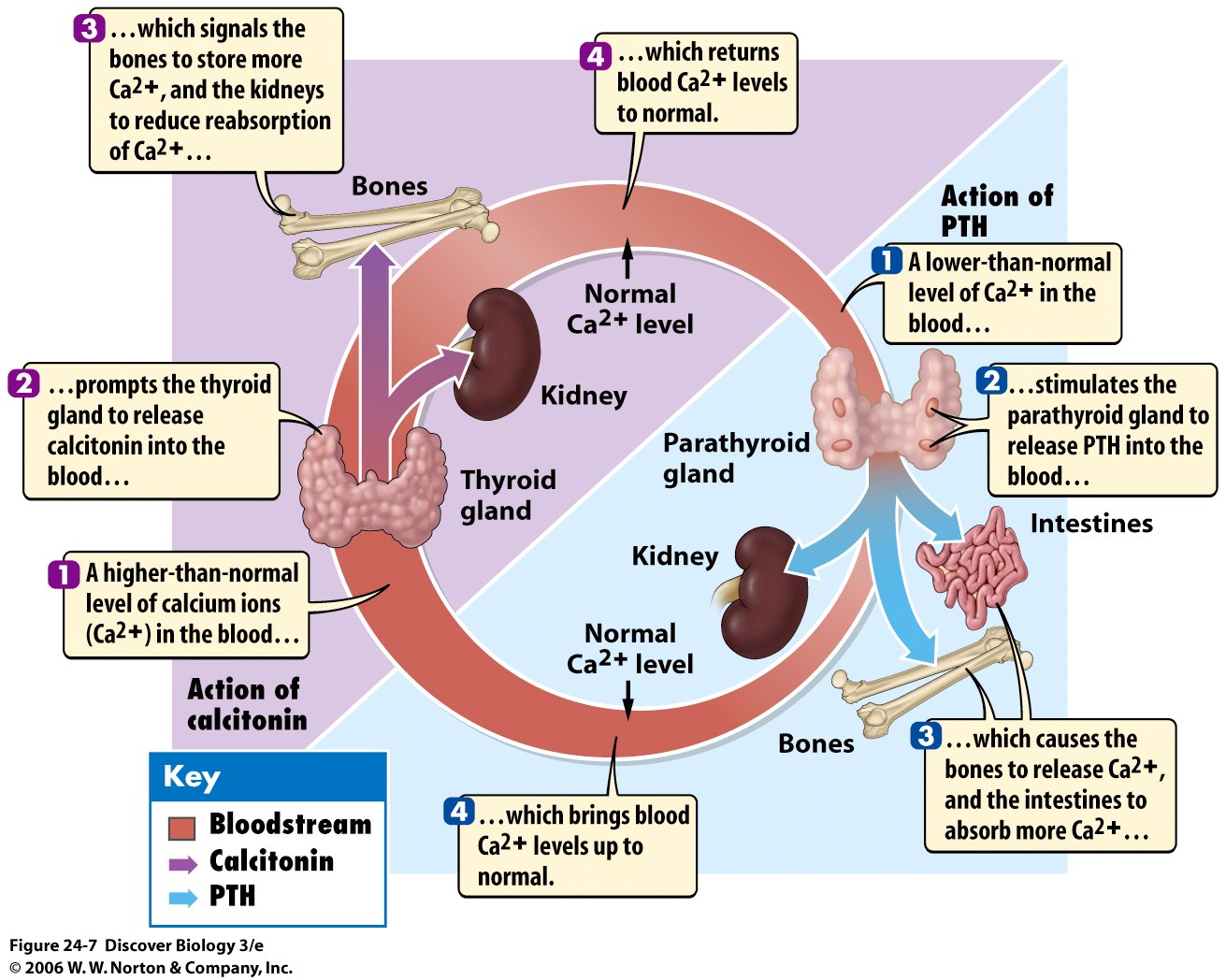BIO 7: Lecture 18 Preview
Nervous systems help animals respond quickly to stimuli
- Neurons are specialized cells that transmit action potentials (quickly
moving electrical signals)
- Sensory cells can start action potentials in neurons
- Neurons can communicate by synapsing with muscles, glands, and other
neurons
- The central nervous system is where many neurons communicate,
information is interpreted and stored, and responses to stimuli are started.
Neurons are key cells in the nervous system; they have dendrites, a nerve
cell body, and an axon.
- When a dendrite is stimulated, an action potential moves in one
direction only: dendrite to nerve cell body to axon.
- One neuron may receive information from many different sources, through
its dendrites.
- At the end of a stimulated neuron the axon releases neurotransmitter
molecules into a synapse.
- Neurotransmitters are received by protein receptors on muscles, glands,
or other neurons.

A neuron can stimulate muscles to contract, glands to secrete, and/or another
neuron to start an action potential. Different neurotransmitters have different
effects.
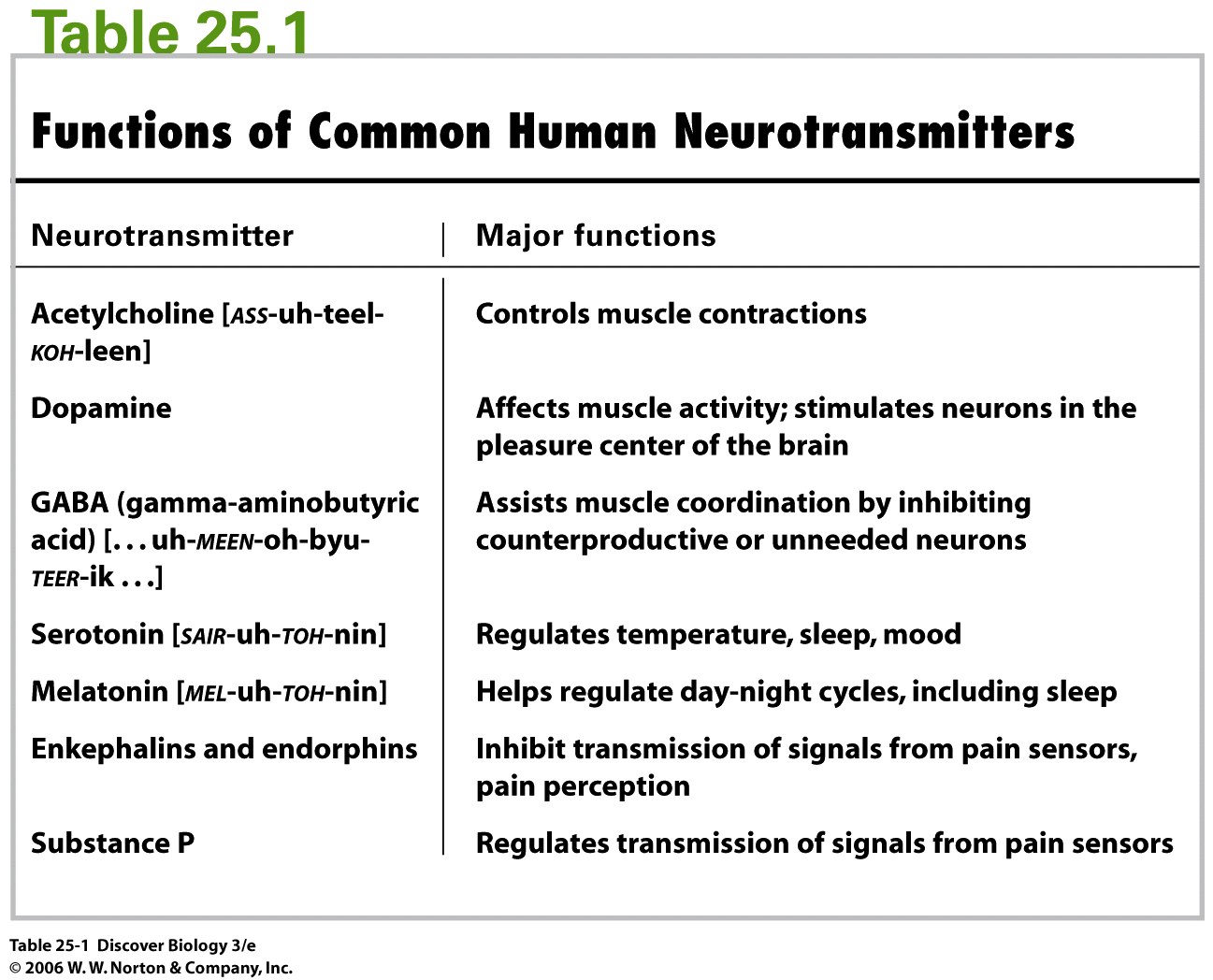
Bundles of neurons make up nerves; larger groups of neurons make up the
brain and spinal cord.
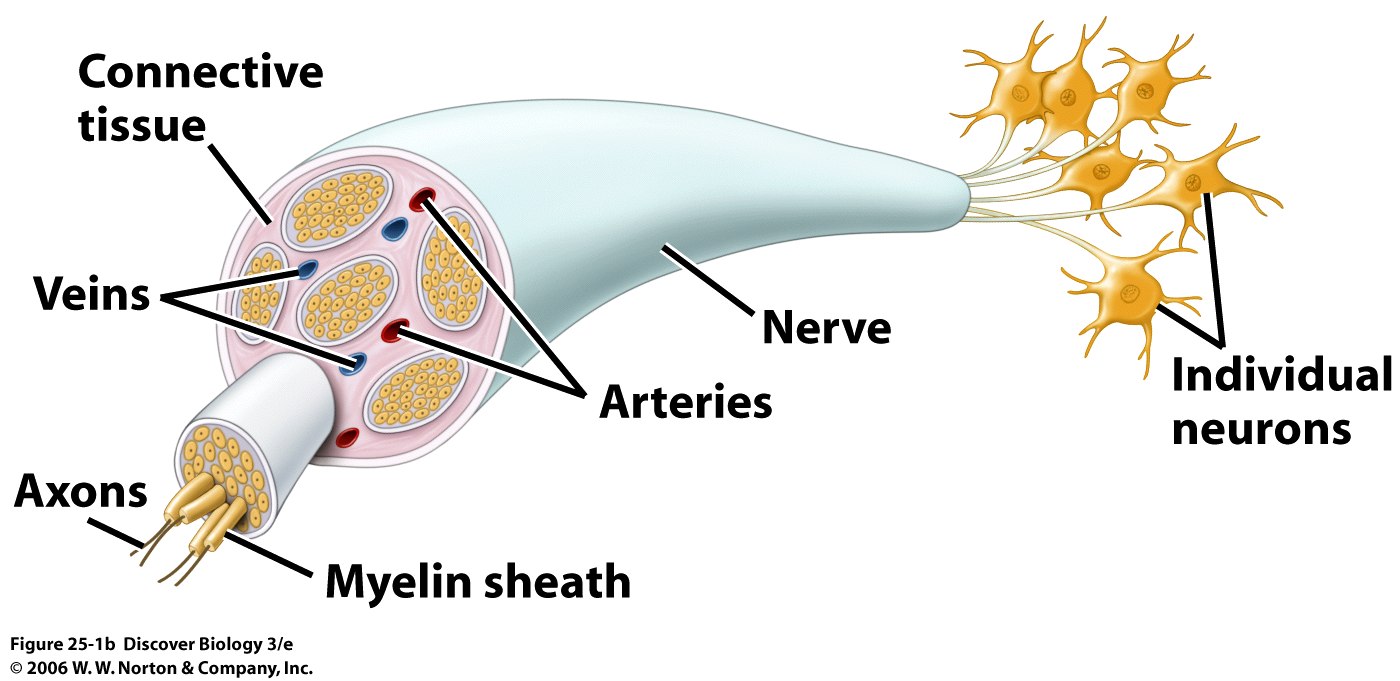
The Peripheral Nervous System (PNS) = nerves coming from sense organs
and going to muscles and glands.
The Central Nervous System (CNS) = brain and spinal cord, receiving
information from sense organs, interpreting and storing information, and sending
information to muscles and glands

Animals that do not move much have reduced CNS's.
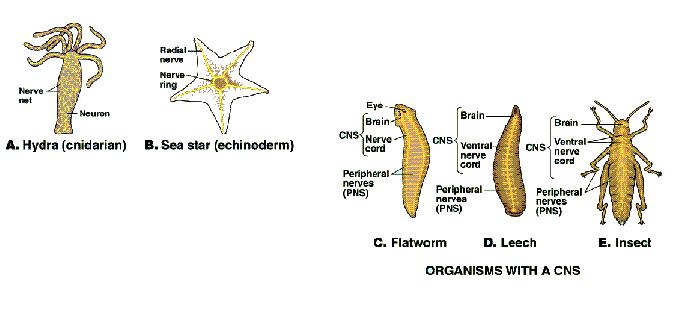
Larger and more mobile animals have larger CNS's.
Parts of the brain are specialized to carry out different functions.
- Forebrain (thalamus, cerebrum, hypothalamus): receives and
interprets sensory information, stores information, forms thoughts,
maintains homeostasis
- Midbrain: maintains muscle tone
- Hindbrain (medulla oblongata, pons, cerebellum): maintains
breathing rates, coordination, balance

A reflex is a quick, unconscious response, to avoid danger e.g. eye blink
when object nears eye quickly
Signal goes from sensory neuron to spinal cord to muscle neuron, before going
to brain.
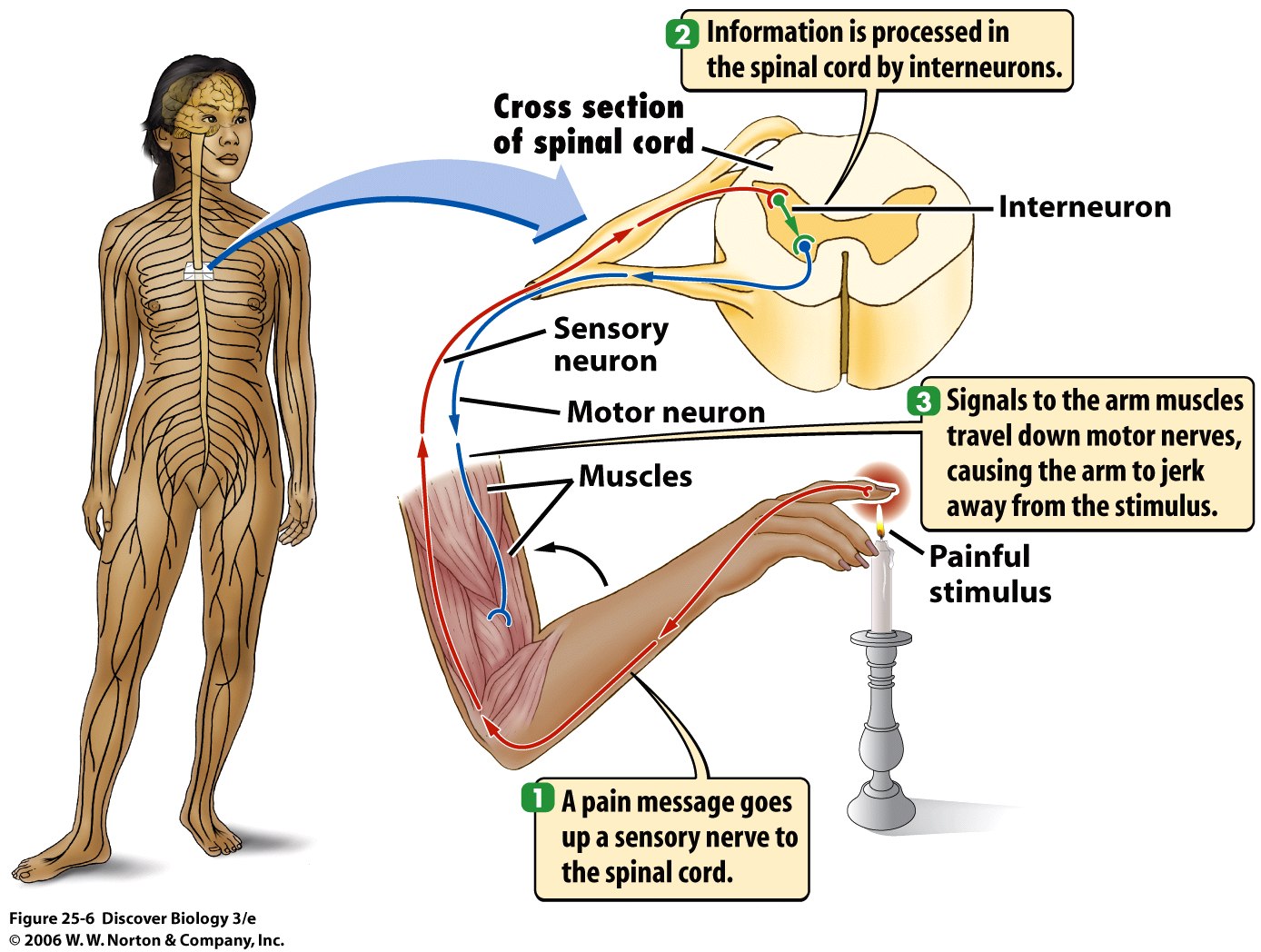
Many animals have highly developed sense organs for detecting changes in
light, pressure, and chemicals in the environment.
- Sense organ converts physical stimulus to action potential in neuron
- The more sensitive cells there are, the smaller the change in a physical
stimulus that can be detected
- Having a pair of sense organs allows detection of the location of some
stimuli
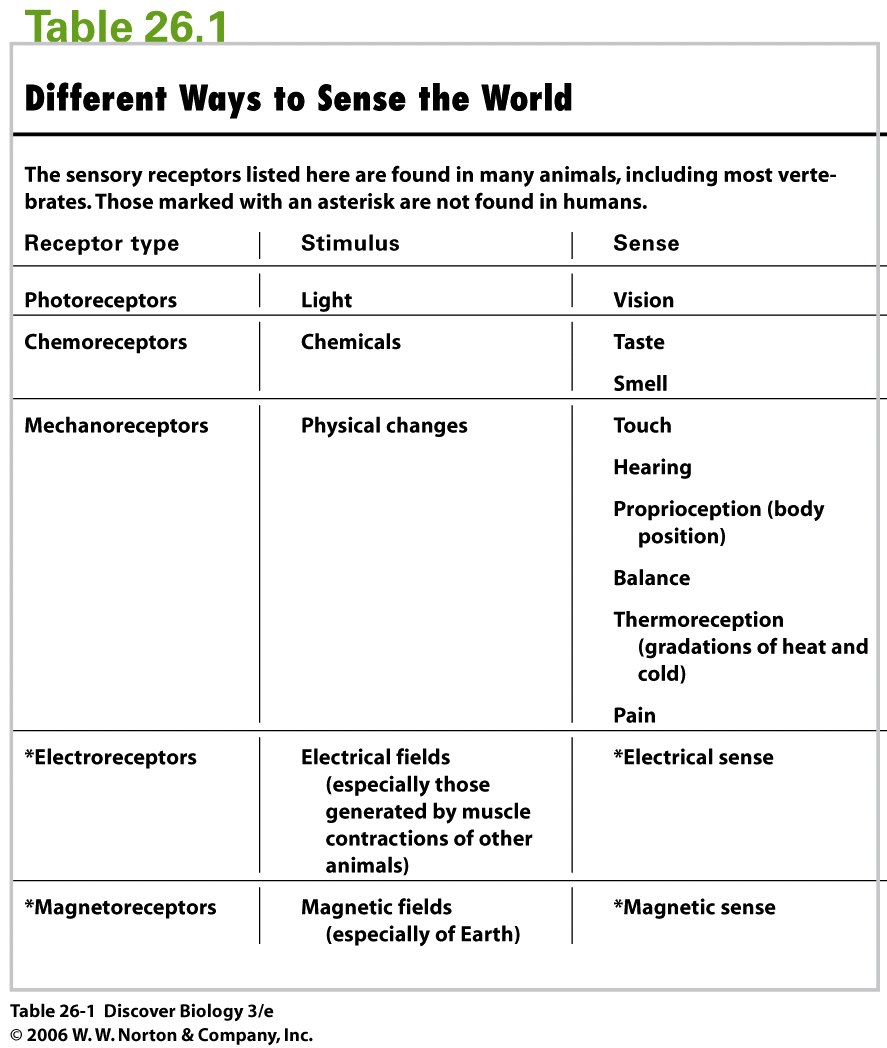
Hormones from the Endocrine System help the Nervous System to Coordinate
Activities among Cells in Big Organisms
- Hormones are released by cells or glands in response to a stimulus; they
are needed in small amounts.
- Hormones travel in the transport system to all parts of the organism.
- Hormones bind to protein receptors on the surface (for some hormones) or
in the cytosol (for steroid hormones) of target cells, and cause the target
cells to change their activities.
- Different target tissues and cells can be affected differently by the
same hormone.
- Hormones work together with other hormones and with the nervous system
to coordinate responses to external and internal conditions, and control
development.
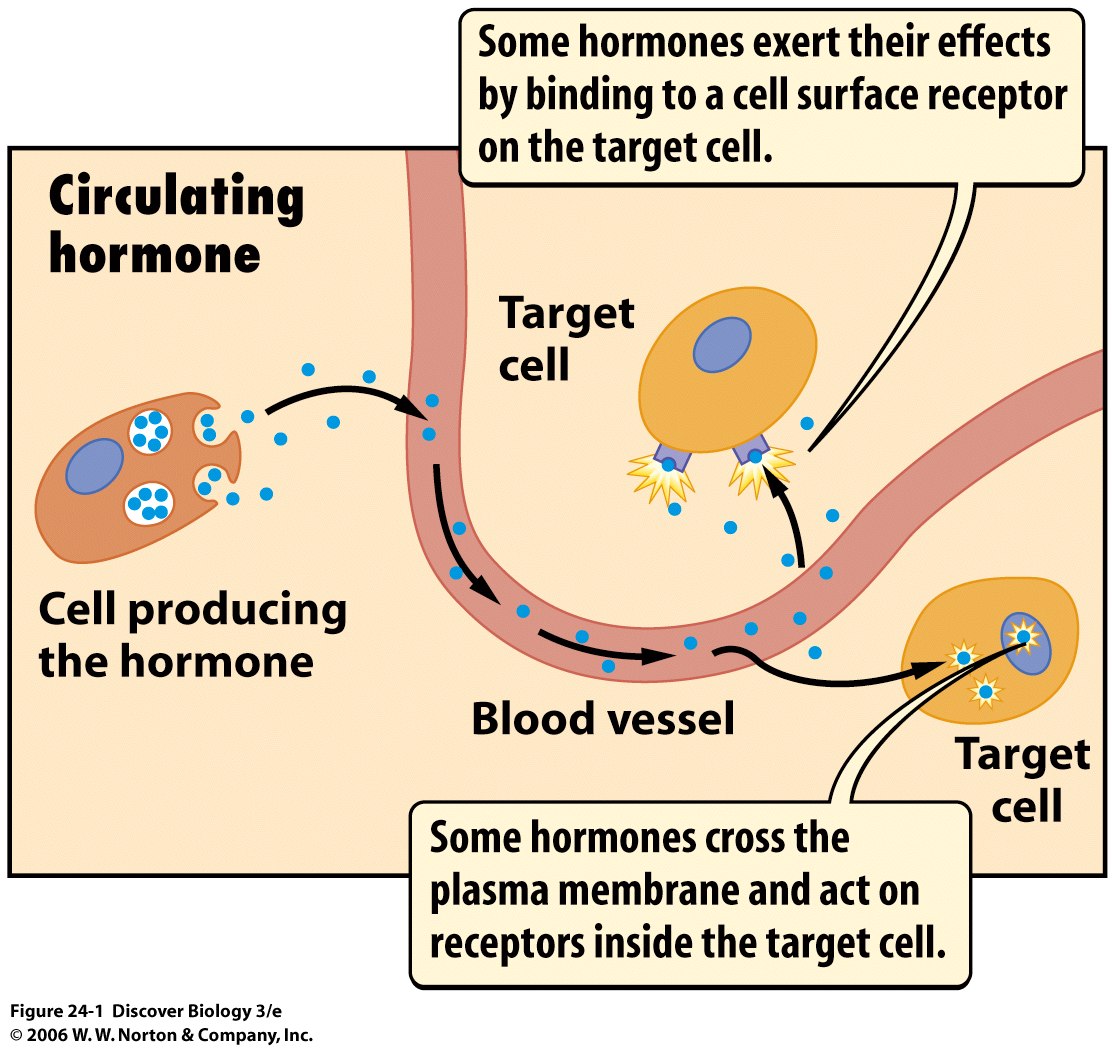
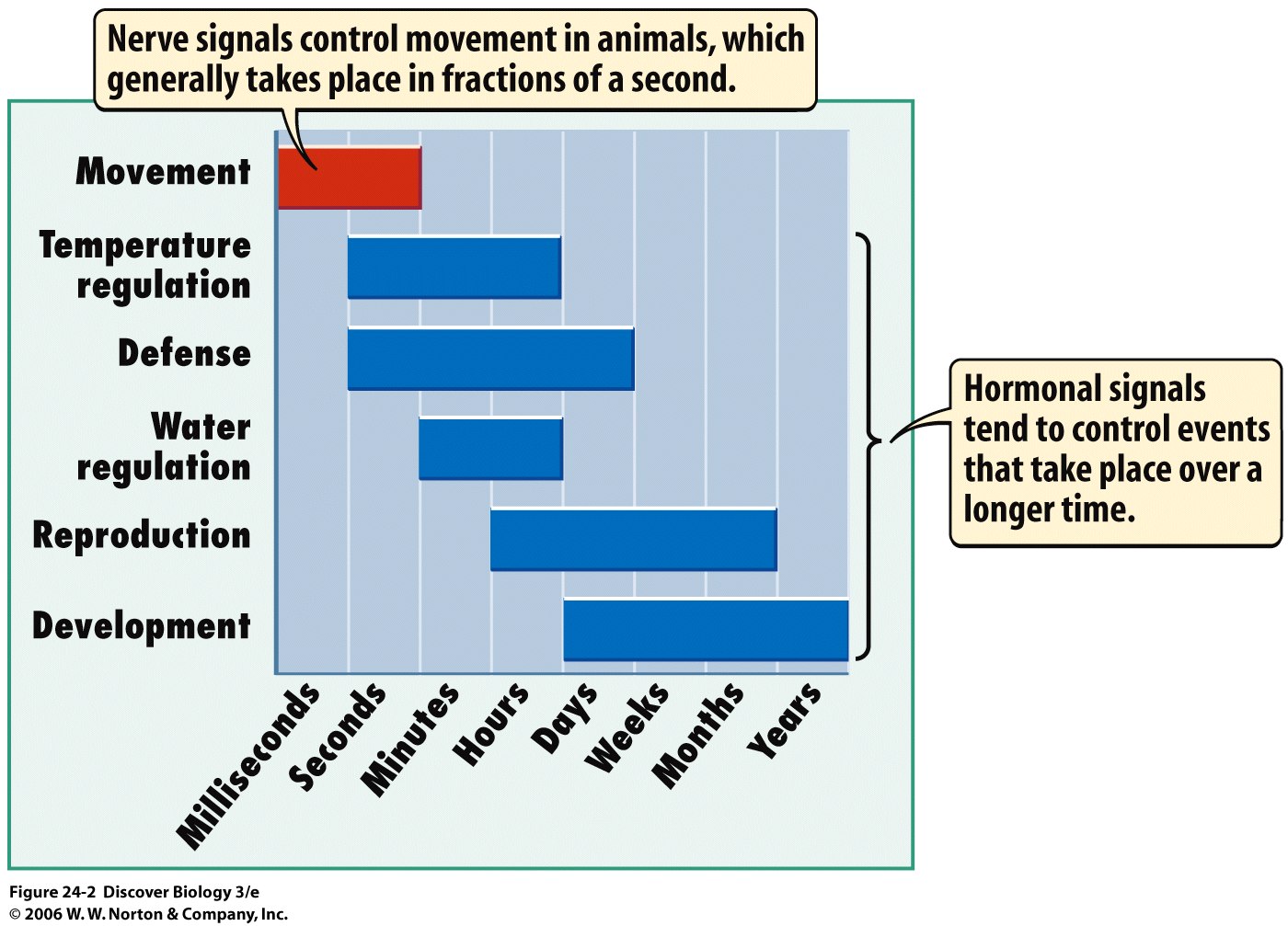
In animals glands that produce hormones are called endocrine glands; they
release hormones into the bloodstream.
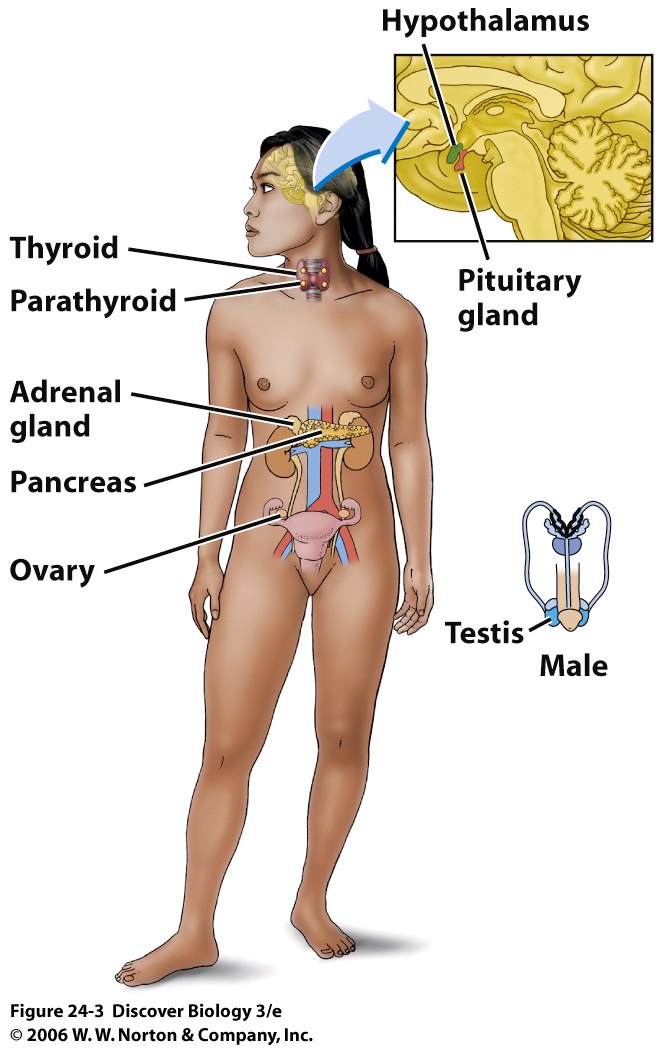
Some hormones control blood glucose levels in humans: insulin, glucagon,
adrenaline.
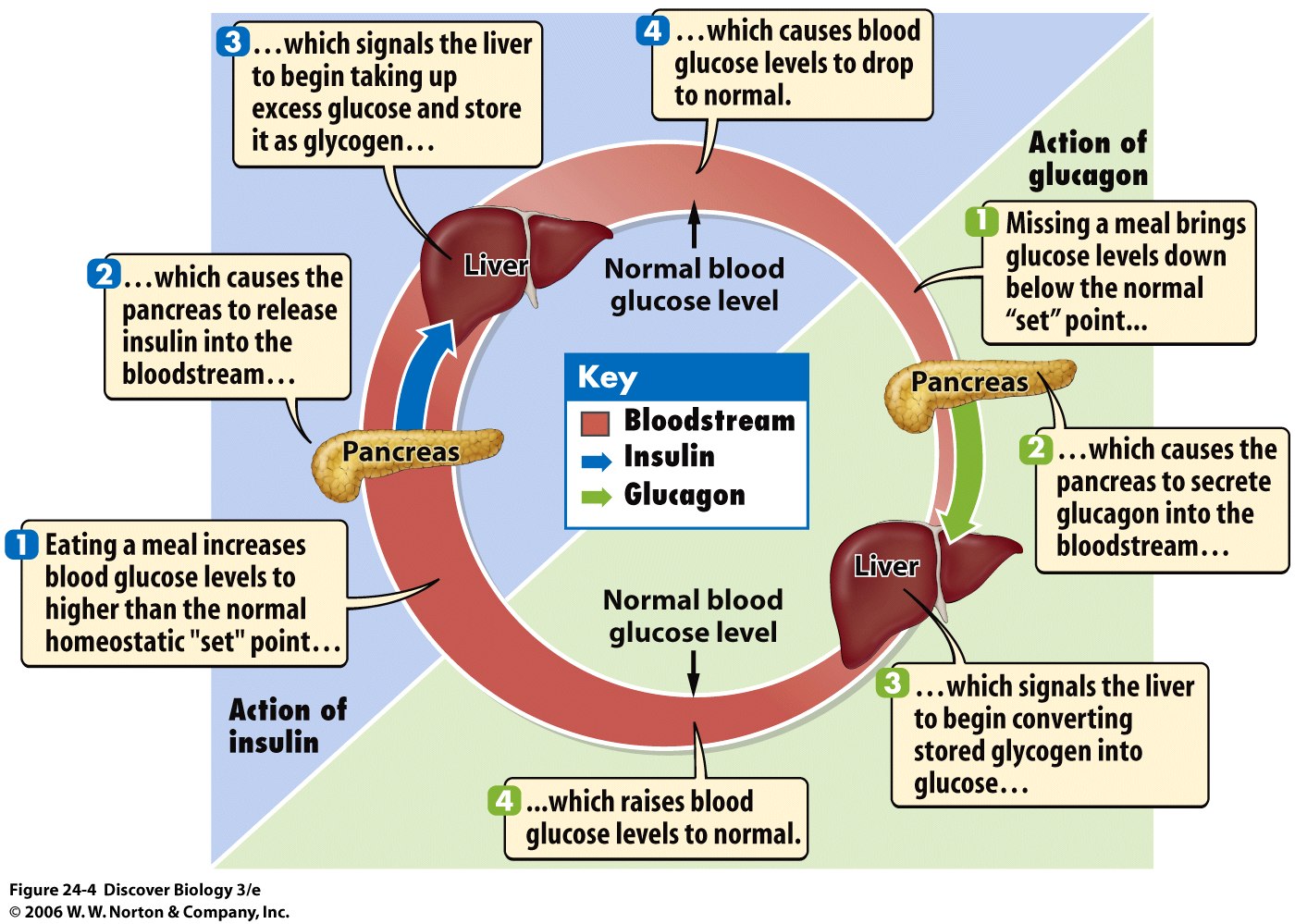
Some hormones keep mineral levels constant in the body, using a negative
feedback mechanism.
